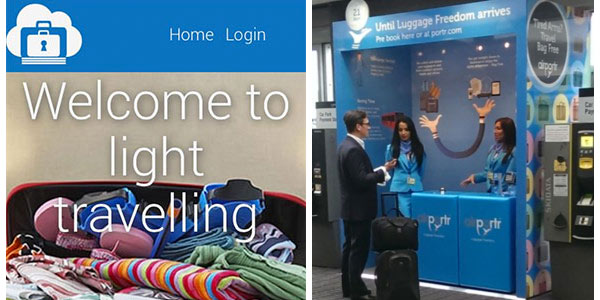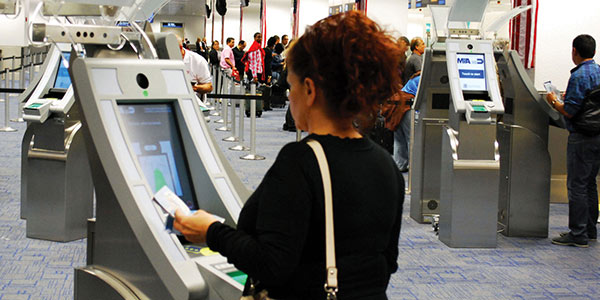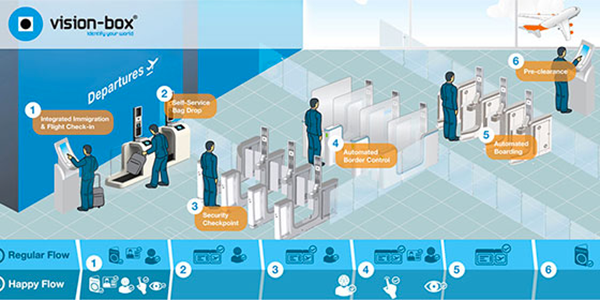2015 marks the tenth year of Future Travel Experience and to support our efforts to be a catalyst for inspiring travel industry stakeholders to improve the passenger experience, we proclaim 2015 the ‘FTE Year of Innovation’.
You will hear much more about this initiative in the coming weeks, including information on how our digital media and three international events will support our efforts, but we start the year by identifying the main areas that airports, airlines, suppliers and other key stakeholders in the travel chain should be seeking to improve over the next 12 months, and offering some recommendations on what can be done to help improve the passenger experience on the ground. Many of these recommendations are inspired by the FTE team’s recent travels during the festive season.
Solving the cumbersome baggage process

2014 brought about a number of developments in the baggage space, with permanent and home-printed bag tags both gaining a lot of traction and a number of airlines and airports trialling or permanently implementing new self-service bag drop solutions. While these are very welcome developments, a couple of fundamental issues still remain, one of which is the fact that regardless of what time your flight departs, you cannot check-in or deposit your bag until two to three hours before; a major inconvenience if you have to check out of your hotel at 10.00 ahead of a flight at 23.00.
Baggage delivery services can certainly help here and while this has become widely available in the US in recent years, other continents are lagging behind. In Europe we have seen the AirPortr baggage delivery service introduced at London City Airport and the new LeaveYourLuggage service has also been launched in Amsterdam, but other than these two examples, not a lot seems to be happening. Beyond Europe and the US, such services are seemingly non-existent. Offsite bag drops have long been highlighted as a potential solution, but projects to further explore their viability have stalled. No traveller likes having to carry around a heavy suitcase for a full day while they wait for their flight, nor when they land ahead of a meeting, so there is clearly a demand for such services and hopefully 2015 will be the year that more airports and airlines explore ways to solve this problem.
Creating a consistent security process
Travelling extensively throughout December really highlighted the biggest problem with airport security – passengers quite simply don’t know what to expect. Having personally passed through eight airports in a short space of time, you would think the security experience would quickly become largely intuitive, but no two processes were the same. Not only were the instructions offered by staff often different, but the regulations varied from airport to airport – some required laptops to be removed from bags, others didn’t; some required pockets to be empty, other didn’t; some required jackets and belts to be taken off; others didn’t. The list goes on.
The vast majority of air travellers appreciate the need to stringently screen all passengers and the queues associated with this process have, unfortunately, become something that most people have simply come to expect. However, major improvements could be made if passengers knew what is expected of them at the security checkpoint, and therefore a more consistent, globally recognisable model would surely help.
IATA and ACI are trying to lead the charge on this front with the Smart Security project, and it’s good to see the likes of Heathrow Airport, Amsterdam Airport Schiphol, Melbourne Airport and Hamad International Airport signing up to pilots. Hopefully these trials will prove to be a success and an improved, more consistent security process can be rolled out on a widespread basis in the near future, because for most travellers airport security remains the most frustrating part of their entire journey.
Tackling overcrowded gate areas
Another area that seems to be frequently overlooked is the gate. While airlines often encourage passengers to make their way to the gate as much as an hour before the departure time, it certainly doesn’t make for a relaxing environment when half of the passengers have to stand around waiting because there are nowhere near enough seats to go around. Of course, space in airports is at a premium, but you often see wasted space that could be filled with more seats at the gate. The needs of younger flyers are also often overlooked here, and taking just one flight with a young family is enough to highlight the value of airports offering something to keep children occupied. The gate area is an ideal place to offer games and screens for younger flyers to interact with, but it’s surprising how many airports fail to grasp this opportunity.
An aside to this is the gate announcements, or the lack of them, in some airports. Having spent a number of hours waiting at departure gates in December, at times the lack of information offered by the airlines was shocking. On more than one occasion we witnessed passengers almost missing their flight not because they were late to the gate, but because the airline hadn’t even announced that the boarding process was coming to an end. If you offer a shared seating area to serve multiple gates, keeping passengers well informed of which flight is boarding should be a minimum requirement.
A more seamless arrivals experience

The arrivals process can be equally frustrating, especially when you have to queue for an hour at immigration and then crowd around a baggage carousel after a 10-hour flight. In 2014 we saw a number of airports in North America embrace Automated Passport Control (APC) and the difference it has made in many locations highlights the real value of making a solid investment to help tackle passenger pain points. However, long immigration queues are not a problem unique to North American airports. In Europe’s major airports, in spite of the rise of e-gates, queues are often very long at peak times, leading to questions as to whether an APC-style implementation is worth exploring in Europe or Asia, especially given the success of the project in the US and Canada.
As for baggage reclaim, end-to-end baggage delivery services could certainly help here, as could more mobile-based baggage tracking services. Permanent and embedded bag tags present tracking opportunities (think of Airbus’ Bag2Go concept). Sending passengers a message to say their bag has been successfully loaded is one thing, but why not take it a step further and let them know when their bag is on the reclaim belt to save them having to fight through the crowds to look for their luggage?
Creating a single passenger token

Developing a single passenger token to remove the need for passengers to show their passport and boarding pass at multiple stages of the journey has been a goal that FTE has promoted for some time already, and we’re hopeful that big developments could be on the horizon. In fact, we have some exciting developments in this area to announce very soon, so stay tuned in the coming weeks for further details.
As we have previously reported, Air France-KLM, Aruba Airport and the Dutch government have been working on a biometric-based single token concept, and a soft launch could happen early this year, while IATA is also exploring the concept of a single passenger token. However, with so many stakeholders involved in the end-to-end travel process – such as airports, airlines, and government and immigration agencies to name just a few – the successful creation of a single passenger token requires close collaboration, dedication and investment from all involved. The long-term benefits will, however, outweigh the initial efforts and outlay.
2015 – time to prioritise the passenger experience
Solving each of the above issues requires investment in terms of time, resource and money, and it can naturally be difficult to invest in projects that may not be seen as the most pressing priority. However, the reputations of all organisations in this industry are largely defined by the travellers themselves, who are increasingly voting with their feet when deciding which airport and airline best suits their needs and preferences, so those that go the extra mile will be the ones that reap the rewards. The start of a New Year presents the ideal opportunity to explore what steps your organisation can take to help improve the travel experience.






